Pave

In the ever-evolving landscape of cannabis cultivation, the Pave Strain emerges as a noteworthy hybrid, capturing the attention of both connoisseurs and medical patients alike. A result of crossbreeding the Paris OG with The Menthol, this strain boasts a complex terpene profile that yields a unique amalgamation of blingy, minty, and gassy notes, with a potency that is reflected in its high THC content, averaging between 27-29%.
While its aesthetic appeal is undeniable, characterized by a dazzling white trichome coverage, the Pave Strain is not merely a feast for the eyes. Its multifaceted effects range from a tingling sensation to euphoria, and even arousal, positioning it as a potential candidate for the treatment of various ailments such as depression and chronic pain. However, its potency is a double-edged sword, presenting possible adverse effects like anxiety, dry eyes, and dry mouth.
As we consider the intricate balance between its benefits and drawbacks, one is prompted to examine the broader implications of such a potent strain on both the user experience and the therapeutic landscape.
Genetic Lineage
Delving into the genetic lineage of the Pave Strain reveals a tapestry of inherited traits, offering insights into its distinctive effects, aromas, and potential cultivation intricacies.
The Pave Strain, a novel cultivar in the cannabis market, is a product of meticulous genetic selection and breeding, revealing a complex profile influenced by its notable progenitors. One such forebear, Paris OG, contributes a robust genetic framework known for its sedative effects and a rich terpene profile that imbues the Pave Strain with its characteristic aroma.
Compound Genetics, a renowned breeding entity in the cannabis industry, is instrumental in the Pave Strain’s development, applying rigorous selection criteria to isolate desirable phenotypes that emphasize potency, flavor, and adaptive growth patterns. By integrating advanced genomic analysis, Compound Genetics ensures that the Pave Strain not only preserves the quintessential traits of Paris OG but also enhances them through hybrid vigor.
The scrutiny of the Pave Strain’s genetic lineage is vital, as it dictates phenotypic outcomes, influencing THC/CBD ratios, terpene synthesis pathways, and resilience to environmental stressors. Cultivators must, therefore, adapt their methodologies to accommodate the strain’s genetic predispositions, optimizing growth conditions to achieve peak expression of its inherited characteristics. Such precision in cultivation is paramount to realize the full potential of the Pave Strain’s genetic inheritance.
History and Origin
Understanding the genetic lineage of the Pave Strain lays the foundation for exploring its history and origin, where the crossbreeding of Paris OG and The Menthol marks the genesis of this unique hybrid’s journey in the cannabis lineage. The meticulous selection of these parent strains was aimed at creating a hybrid strain with a complex profile, balancing the sedative effects of Paris OG with the refreshing clarity of The Menthol. This endeavor resulted in a cultivar with not only an intricate terpene palette but also significant therapeutic potential.
The Pave Strain has a high THC level averaging 27-29%, placing it amongst the more potent varieties; thus, its cultivation and consumption are recommended for experienced users. Potential relief from ailments such as depression and chronic pain is suggested, with a nod to its efficacy in reducing nausea and chronic stress. The strain’s introduction into the market has been met with acclaim for its unique sensory attributes and its efficacy in symptom management.
| Attribute | Description |
|---|---|
| Genetic Makeup | Paris OG x The Menthol |
| Aroma | Spicy peppery menthol, sweet sugary grapes |
| Flavor | Pepper, mint, pear |
| THC Content | High (27-29% average) |
| Therapeutic Use | Depression, chronic pain, nausea, chronic stress |
Responsible and moderate use is imperative due to its high potency and potential effects on anxiety relief and stress reduction.
THC/CBD Content
The Pave Strain exhibits a substantial THC concentration that typically spans from 22% to 27%, coupled with a comparatively modest CBD content of approximately 1%. This cannabinoid profile suggests that Pave is a balanced hybrid, providing a blend of cerebral and physical effects that are both potent and nuanced.
Cannabinoid Synergy:
- THC Dominance: The high THC to CBD ratio amplifies psychoactive efficacy, catalyzing an entourage effect that enhances the therapeutic and recreational properties.
- CBD Modulation: CBD’s presence, albeit minimal, may contribute to modulating the psychoactivity of THC, potentially mitigating some side effects associated with high-THC strains.
- Terpene Interaction: Terpenes in the Pave strain work synergistically with cannabinoids to refine effects, adding complexity to its profile.
An analytical approach to dosing is critical, given the high THC content. Precision in measurement ensures that users can anticipate the strain’s psychoactive impact and manage their experience effectively.
Medical patients might find the strain’s potency particularly beneficial, as it may alleviate symptoms with fewer inhalations or smaller doses, maximizing the therapeutic outcomes while minimizing potential adverse reactions. However, the low CBD concentration suggests limited counterbalance to THC’s intensity, necessitating cautious titration for new users.
Terpene Profile
Building on the cannabinoid composition of the Pave strain, its terpene profile plays a crucial role in defining its aromatic nuances and influencing its therapeutic potential. The Pave strain, as a hybrid, exhibits a complex terpene constellation, with primary constituents such as myrcene, limonene, and caryophyllene. These volatile organic compounds are present in quantifiable concentrations, each contributing to the strain’s distinct sensory profile.
Myrcene, often the most abundant terpene in cannabis, is known for its sedative properties and its potential to enhance the permeability of the blood-brain barrier to cannabinoids. In the Pave strain, myrcene’s concentration may range in the upper percentiles, synergistically contributing to the overall calming effect.
Limonene, with its citrusy aroma, is postulated to elevate mood and provide stress relief. Its presence in Pave is discernible, complementing the strain’s sweet and fruity notes.
Caryophyllene, a sesquiterpene with affinity for CB2 receptors, may offer analgesic and anti-inflammatory benefits, aligning with the Pave strain’s reported efficacy in pain management.
Detailed terpenological analysis reveals that the interplay between these terpenes in the Pave strain could underpin its purported anxiolytic and mood-enhancing effects, illustrating the importance of a nuanced understanding of terpene profiles in cannabis hybrids.
Effects
Contributing to its multifaceted appeal, the Pave strain elicits effects such as tingling sensations and euphoria, often accompanied by an increase in arousal. Utilizing this particular strain can lead to a complex interplay of physiological and psychological responses, primarily due to its high tetrahydrocannabinol (THC) content, which averages between 27-29%. This significant concentration of THC facilitates the binding with CB1 cannabinoid receptors, precipitating the notable psychoactive outcomes.
-
Psychoactive Effects:
-
Euphoria: Rapid onset, attributed to high THC levels, enhancing dopamine release.
-
Arousal: Stimulates sensory perception, potentially heightening tactile experiences.
-
Anxiety: A biphasic response, with low doses reducing anxiety, while higher doses might exacerbate it.
-
Therapeutic Implications:
-
Depression: Mitigates symptoms by modulating neurotransmitters.
-
Chronic Pain: Alleviates nociceptive and neuropathic pain by desensitizing pain receptors.
-
Fatigue: Acts as a temporary stimulant, counteracting lethargy.
-
Adverse Reactions:
-
Xerostomia: THC induces a decrease in saliva secretion.
-
Ocular Dryness: Impacts the lacrimal glands, reducing tear production.
In using cannabis, particularly the Pave strain, the detailed analysis of user reviews, averaging 4.7 out of 5, underscores its efficacy in delivering immediate relief with a balance of desirable effects and manageable adverse reactions. This analysis further justifies its selection for specific therapeutic applications.
Medical Uses
Regarding the Pavé strain, medical practitioners and patients have reported its utility in alleviating symptoms of depression, fatigue, and pain, reflecting its diverse therapeutic potential. With a substantial average THC concentration of 27-29%, Pavé’s pharmacologic profile suggests a high potential for symptom relief across various conditions. However, such a potent THC level also necessitates careful titration and professional oversight to mitigate the risk of adverse effects, particularly in individuals with a lower tolerance or those new to cannabis therapy.
The strain’s cannabinoid composition, including its terpenoid and flavonoid content, is thought to contribute to its analgesic properties, making it a candidate for patients suffering from chronic pain. Given its reported efficacy in reducing symptoms of depression and fatigue, the strain may modulate neurotransmitter systems beyond the endocannabinoid system, such as serotonin and dopamine pathways.
Below is a detailed breakdown of reported benefits from Pavé strain usage:
| Symptom Relief | Percentage of Users Reporting |
|---|---|
| Depression | 26% |
| Fatigue | 13% |
| Chronic Pain | Not explicitly quantified |
It is critical to consult healthcare professionals before initiating treatment with Pavé, particularly due to its psychoactive potency and potential for inducing anxiety or exacerbating preexisting mental health conditions.
Flavor and Aroma
The Pavé strain’s complex flavor profile, characterized by its distinct blend of peppery, minty, and fruity notes, is as intricate as its visual appeal, promising a multi-layered sensory experience for the consumer. This strain’s terpene composition is meticulously intertwined to produce:
- Primary Flavor Notes:
- Peppery: Predominantly from the terpene caryophyllene, contributing to a spicy undertone.
- Minty: Evidenced by the presence of menthol, offering a cooling sensation.
- Fruity: A bouquet of pear, sweet sugary grapes, and sweet fruity plums, likely emanating from a complex blend of esters and ketones.
The analytical breakdown of Pavé’s aroma indicates a sophisticated interplay between these aromatic compounds, resulting in a flavor spectrum that ranges from:
- Spicy Peppery Menthol: Acting as the initial olfactory encounter, providing a sharp, invigorating introduction.
- Sweet Sugary Grapes: Succeeding the initial sharpness with a softer, more inviting sweetness.
- Fresh Grapes and a Punch of Spicy Menthol: Culminating in a dynamic, enduring finish that encapsulates the strain’s potency and depth.
With a high THC concentration averaging between 27-29%, the Pavé strain delivers its flavor and effects with precision, ensuring a robust and enduring experience with each use, while also offering therapeutic benefits for those seeking relief from various ailments.
Appearance
How does the Pavé strain captivate the visual senses? Its dense, diamond-shaped forest green nugs with deep purple undertones manifest a striking visual, complemented by sparse golden hairs and a copious coating of THC crystals that give the buds a shimmering, frost-like appearance.
The Pavé strain’s morphology showcases a meticulous balance between its indica and sativa heritage, resulting in medium-sized buds that exhibit a robust structural integrity.
The chromatic interplay of the dark green and purple foliage underscores the strain’s visual allure, while the golden pistils punctuate the color scheme with a metallic sheen. A detailed analysis of the trichome distribution reveals a white-out blizzard condition, indicative of a high THC concentration, quantitatively averaging between 27-29%.
This prolific resin production not only contributes to the aesthetic but also signals the strain’s potency, which may bear relevance when considering its application based on medical advice.
The Pavé strain’s appearance is not merely a passive attribute but a testament to its hybrid vigor, combining visual splendor with a pharmacological profile that may address conditions such as depression, chronic pain, nausea, and stress. Its appearance, therefore, is a visual prelude to its therapeutic potential.
Grow Information
Building upon its dazzling exterior, Pavé’s cultivation process requires keen attention to detail to ensure the strain’s distinctive white-out trichome production and balanced genetic expression.
The grow information for Pavé is as complex as its genetic lineage, necessitating a controlled environment that meticulously addresses the varietal’s unique phenotypic requirements:
-
Optimal Growing Conditions
-
Temperature: Maintain a consistent range between 68-77°F (20-25°C) to foster robust trichome development.
-
Humidity: Implement a relative humidity (RH) level of 40-50% during vegetative growth and reduce to 30-40% in flowering to mitigate mold risk.
-
Lighting: Utilize full-spectrum LED lights with precise photoperiod control to simulate ideal light cycles for vegetative and flowering stages.
-
Nutrient Regimen
-
Macronutrients: Calculate nitrogen, phosphorus, and potassium ratios to align with growth phase transitions, ensuring peak metabolic performance.
-
Micronutrients: Dose trace elements like calcium and magnesium to fortify plant resilience against environmental stressors.
-
Harvesting Techniques
-
Trichome Inspection: Employ magnification tools to gauge trichome maturity, harvesting when milky white to amber ratio optimizes cannabinoid profile.
-
Dry/Cure: Implement a drying period of 7-14 days, followed by a curing process in airtight containers, to enhance flavor terpene preservation.
With a THC concentration averaging 27-29%, the grow information provided reflects the precision needed to achieve Pavé’s full therapeutic potential.
Adverse Effects
Despite Pavé’s alluring qualities, consumers should be cognizant of its potential adverse effects, such as dry mouth and dry eyes, which are typical responses to cannabis use. These effects are often attributed to the cannabinoid compounds present in the strain, which can alter salivary flow and tear production. When considering the Pavé strain’s high THC content, averaging between 27-29%, one must approach its consumption with caution due to the increased likelihood of more pronounced adverse reactions.
The table below summarizes the potential adverse effects associated with the Pavé strain:
| Adverse Effect | Description |
|---|---|
| Dry Mouth | A reduction in saliva production leading to a sensation of oral dryness. |
| Dry Eyes | Decreased lacrimation causing discomfort in the eyes. |
| Anxiety | Heightened nervousness or worry, which may be exacerbated in predisposed individuals. |
| Increased Heart Rate | A possible rise in beats per minute, which should be monitored closely. |
| Dizziness | A sense of unsteadiness or lightheadedness that may occur post-consumption. |
It is paramount to initiate consumption with a reduced dosage to evaluate individual tolerance and to mitigate the risk of experiencing these adverse effects. Individuals with pre-existing medical conditions are strongly advised to consult with healthcare professionals to avoid potential complications associated with the Pavé strain’s potent properties.
Comparisons with Similar Strains
In evaluating the Pavé strain in relation to its counterparts, it is essential to scrutinize its genetic heritage, which includes Paris OG and The Menthol, to discern shared traits and divergences in their profiles. The objective comparisons with similar strains involve a multifaceted approach that considers:
-
Genetic Lineage
-
Paris OG’s influences may be evident in the Pavé strain’s potential for relaxation and a sedative effect, often sought by users with insomnia.
-
The Menthol, known for its cooling sensation, could contribute to Pavé’s unique minty aroma and possibly its analgesic properties.
-
Phytochemical Composition
-
THC and CBD levels are quantitatively compared to ascertain Pavé’s potency and efficacy in addressing specific medical conditions.
-
The terpene profile is analyzed to assess the entourage effect, which may enhance therapeutic outcomes.
-
Therapeutic Efficacy
-
Comparative analysis of the efficacy in alleviating symptoms such as depression, fatigue, and pain provides a metric for potential medical applications.
-
User reviews offer qualitative data, contributing to a comprehensive understanding of Pavé’s standing in the cannabis community.
This technical analysis, through precise calculations and detailed examination, aims to establish the Pavé strain’s unique position in the market by thorough comparisons with similar strains.
Research and Studies
Having established the comparative framework for Pavé’s attributes and its place in the market, the discussion now turns to the pivotal role of research and studies in elucidating the strain’s specific effects on mental and physical health. Rigorous scientific inquiry serves as the cornerstone for dissecting the nuanced pharmacological profiles of cannabis varieties such as the Pavé strain. Empirical data, gleaned through methodologically sound investigations, informs stakeholders about the efficacies and potentialities inherent within Pavé’s unique cannabinoid and terpene synergy.
| Factor | Description | Relevance to Pavé Strain |
|---|---|---|
| THC Content | Measurement of psychoactive compound | Dictates psychotropic potency |
| Aroma/Flavor | Sensory profile analysis | Influences consumer preference |
| Genetic Lineage | Examination of strain heritage | Determines specific therapeutic applications |
Ongoing research and studies provide a matrix of quantifiable parameters that significantly enhance our understanding of Pavé’s position within the therapeutic landscape. By integrating precise calculations of THC levels with detailed analysis of consumer feedback, researchers can extrapolate the strain’s potential for treating certain conditions. Furthermore, the credibility of these studies is paramount to ensure accurate representation of Pavé’s effects, promoting safe consumption practices tailored to individual health contours. It is through this meticulous approach that optimal utilization strategies for Pavé are devised, balancing empirical evidence with user-centric data.
Frequently Asked Questions
What Is the Pave Strain?
The subject at hand concerns the genetic lineage of a specific cannabis cultivar. The Pavé strain is a balanced hybrid with Paris OG and The Menthol as progenitors, notable for its high THC content and therapeutic potential.
Is Pave Runtz a Sativa or Indica?
Pave Runtz is a hybrid cannabis cultivar with a balanced genetic heritage, comprising an equal mix of 50% indica and 50% sativa genetics, offering a versatile profile for both recreational and medicinal applications.
Is Candy Pave Strain Indica or Sativa?
The Candy Pave strain exhibits a balanced cannabinoid profile indicative of a hybrid, with both indica and sativa properties derived from its lineage, Paris OG and The Menthol, offering a multifaceted therapeutic potential.
Who Created Pave Strain?
The origin of the Pavé strain can be traced back to Compound Genetics, a prominent cannabis breeding company recognized for their meticulous crossbreeding techniques and precise phenotype selection to achieve high THC levels and unique flavor profiles.

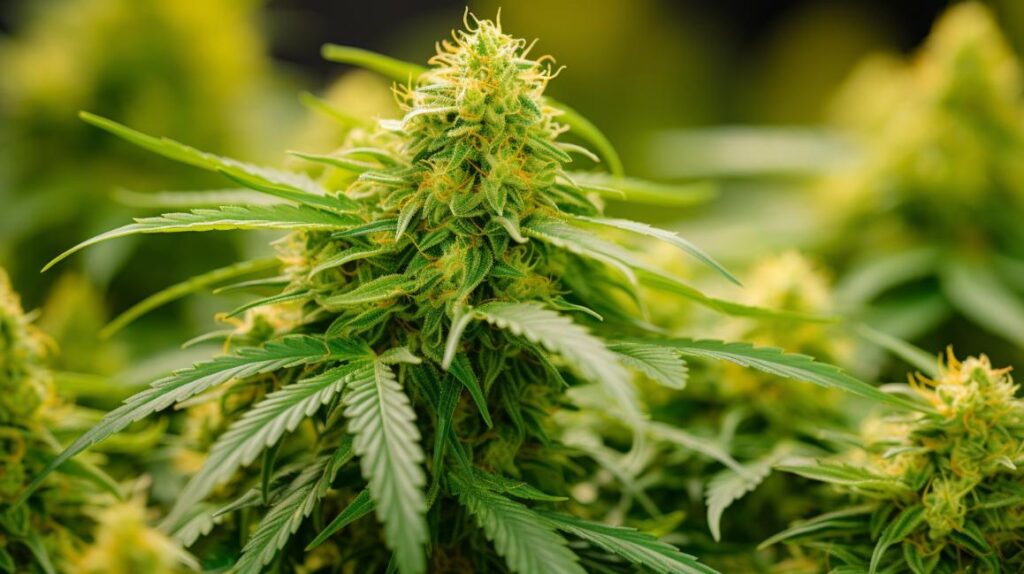
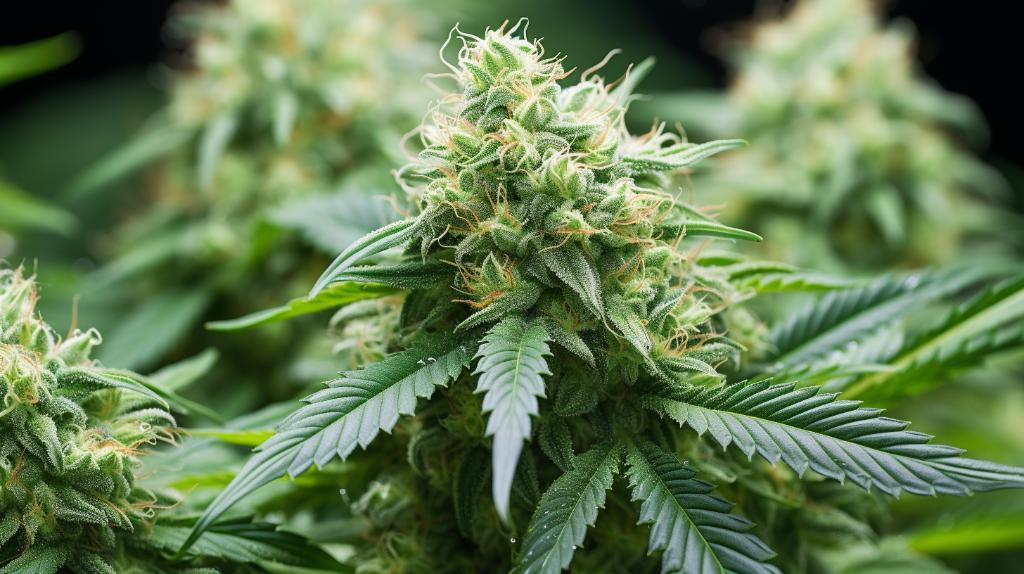
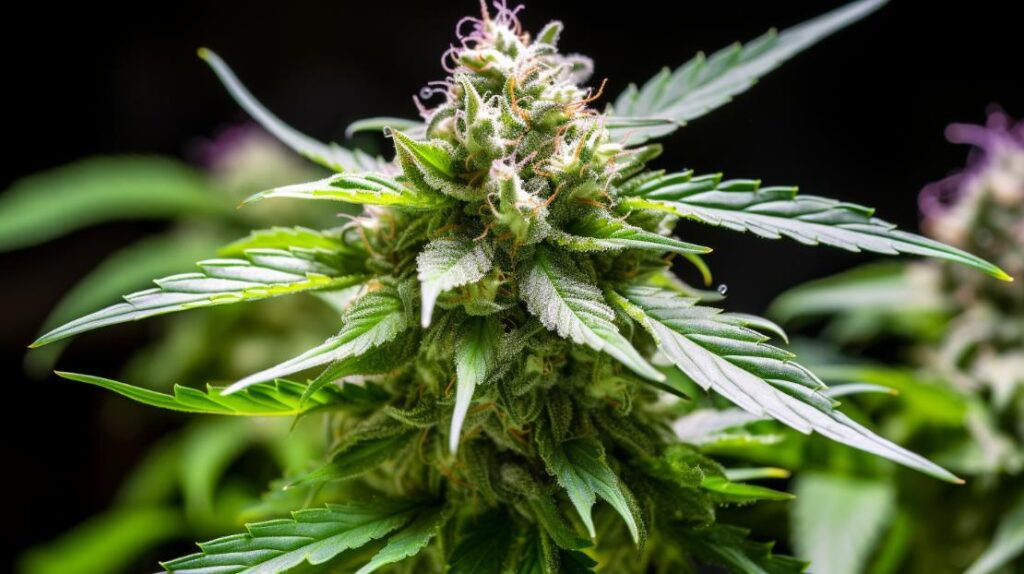
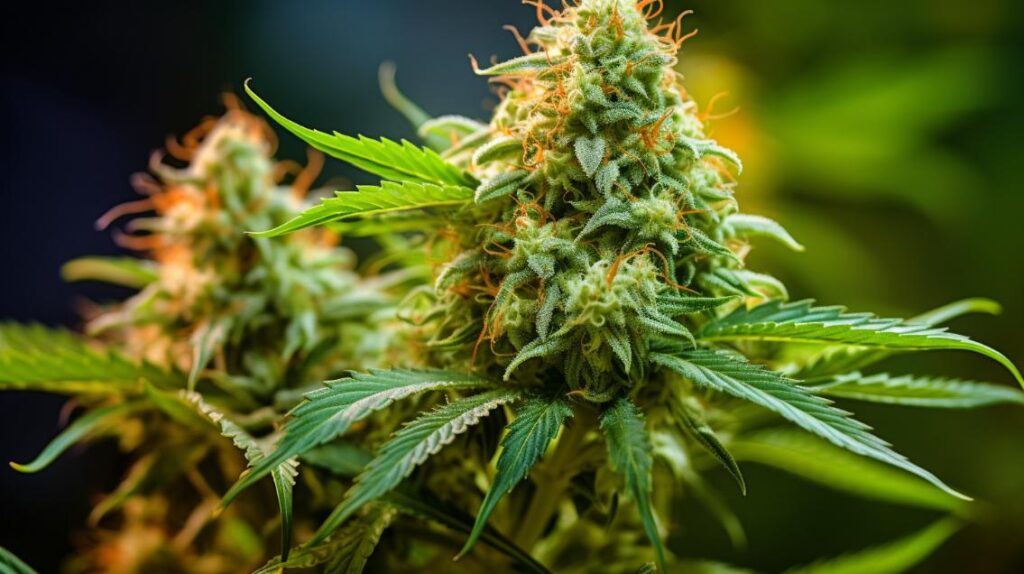
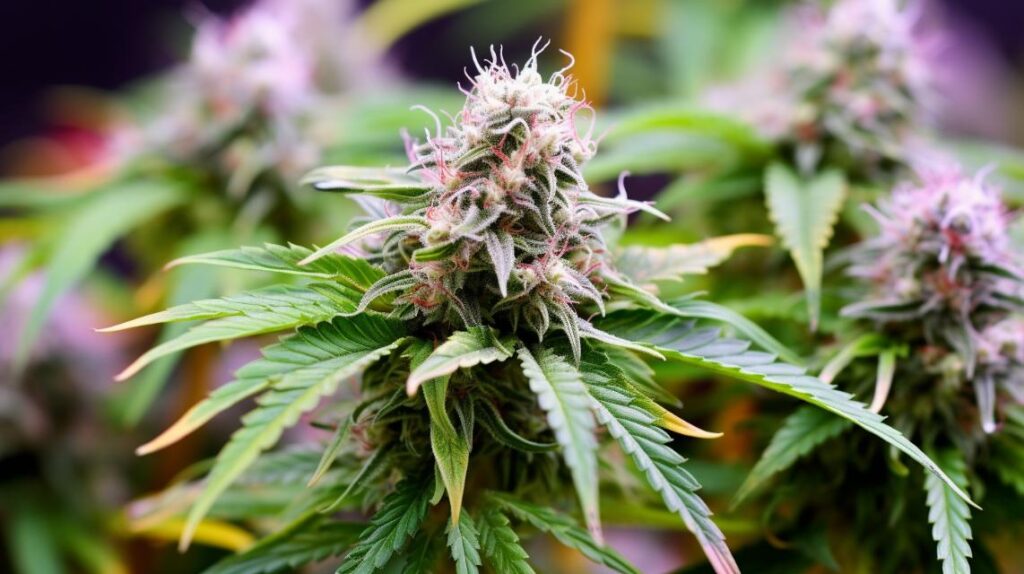

Responses